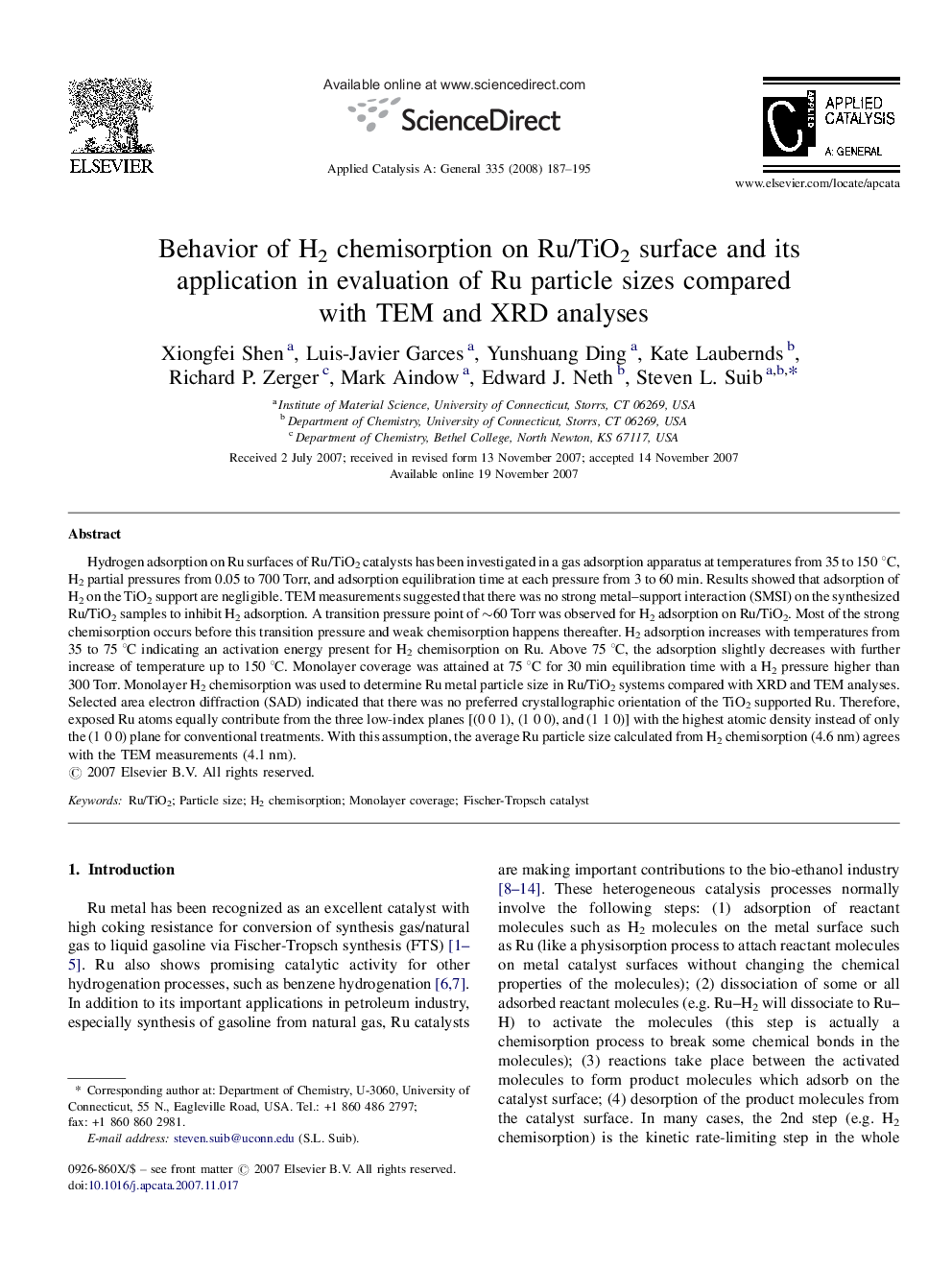| کد مقاله | کد نشریه | سال انتشار | مقاله انگلیسی | نسخه تمام متن |
|---|---|---|---|---|
| 43679 | 45982 | 2008 | 9 صفحه PDF | دانلود رایگان |

Hydrogen adsorption on Ru surfaces of Ru/TiO2 catalysts has been investigated in a gas adsorption apparatus at temperatures from 35 to 150 °C, H2 partial pressures from 0.05 to 700 Torr, and adsorption equilibration time at each pressure from 3 to 60 min. Results showed that adsorption of H2 on the TiO2 support are negligible. TEM measurements suggested that there was no strong metal–support interaction (SMSI) on the synthesized Ru/TiO2 samples to inhibit H2 adsorption. A transition pressure point of ∼60 Torr was observed for H2 adsorption on Ru/TiO2. Most of the strong chemisorption occurs before this transition pressure and weak chemisorption happens thereafter. H2 adsorption increases with temperatures from 35 to 75 °C indicating an activation energy present for H2 chemisorption on Ru. Above 75 °C, the adsorption slightly decreases with further increase of temperature up to 150 °C. Monolayer coverage was attained at 75 °C for 30 min equilibration time with a H2 pressure higher than 300 Torr. Monolayer H2 chemisorption was used to determine Ru metal particle size in Ru/TiO2 systems compared with XRD and TEM analyses. Selected area electron diffraction (SAD) indicated that there was no preferred crystallographic orientation of the TiO2 supported Ru. Therefore, exposed Ru atoms equally contribute from the three low-index planes [(0 0 1), (1 0 0), and (1 1 0)] with the highest atomic density instead of only the (1 0 0) plane for conventional treatments. With this assumption, the average Ru particle size calculated from H2 chemisorption (4.6 nm) agrees with the TEM measurements (4.1 nm).
Ru is an active hydrogenation catalyst in many fields such as Fischer-Tropsch synthesis, fuel cell, bio-ethanol production etc. Most of these applications involve H2 gas absorption on Ru surface to carry further reactions. However, the behavior of H2 adsorption on Ru surface has seldom been investigated systematically. This manuscript presents a systematic study of H2 adsorption on Ru surface (Ru/TiO2) under different adsorption temperatures, equilibrium times, and H2 pressures. H2 chemisorption data were also used to calculate Ru particle sizes and are in agreement with TEM methods.Figure optionsDownload as PowerPoint slide
Journal: Applied Catalysis A: General - Volume 335, Issue 2, 8 February 2008, Pages 187–195